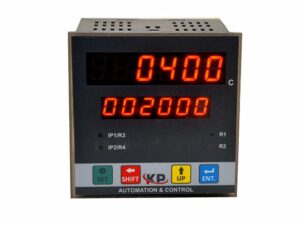The Electronic Load Controller (ELC) is a sophisticated device designed to manage and regulate the load on electrical systems, particularly in renewable energy applications such as solar and wind power. By dynamically adjusting the load, the ELC ensures optimal performance and efficiency of the energy generation system. It prevents overloading and underutilization of the energy produced, thereby enhancing the lifespan of the equipment and improving overall energy management.
Uses of Electronic Load Controller
- Renewable Energy Systems: Primarily used in solar and wind energy systems to manage excess energy production.
- Battery Management: Helps in maintaining battery health by preventing overcharging and deep discharging.
- Grid Stability: Assists in stabilizing the grid by balancing supply and demand in real-time.
- Industrial Applications: Used in various industrial processes to optimize energy consumption and reduce wastage.
- Research and Development: Employed in laboratories for testing and developing new energy technologies.
Technical Data
| Feature | Specification |
|---|---|
| Input Voltage Range | 12V to 48V DC |
| Load Capacity | Up to 100A |
| Control Method | PWM (Pulse Width Modulation) |
| Efficiency | >95% |
| Operating Temperature | -20°C to +60°C |
| Protection Features | Overload, Short Circuit, Over Temperature |
| Communication Interface | RS-232, RS-485, Modbus |
| Dimensions | 200mm x 150mm x 100mm |
| Weight | 1.5 kg |
| Certifications | CE, RoHS, ISO 9001 |
Key Features
- Real-Time Monitoring: Provides real-time data on load, voltage, and current for better decision-making.
- User-Friendly Interface: Equipped with an LCD display for easy navigation and configuration.
- Customizable Settings: Allows users to set specific load parameters according to their requirements.
- Durable Design: Built with high-quality materials to withstand harsh environmental conditions.
The Electronic Load Controller is an essential component for anyone looking to optimize their energy systems, ensuring efficiency, reliability, and sustainability in energy management.

